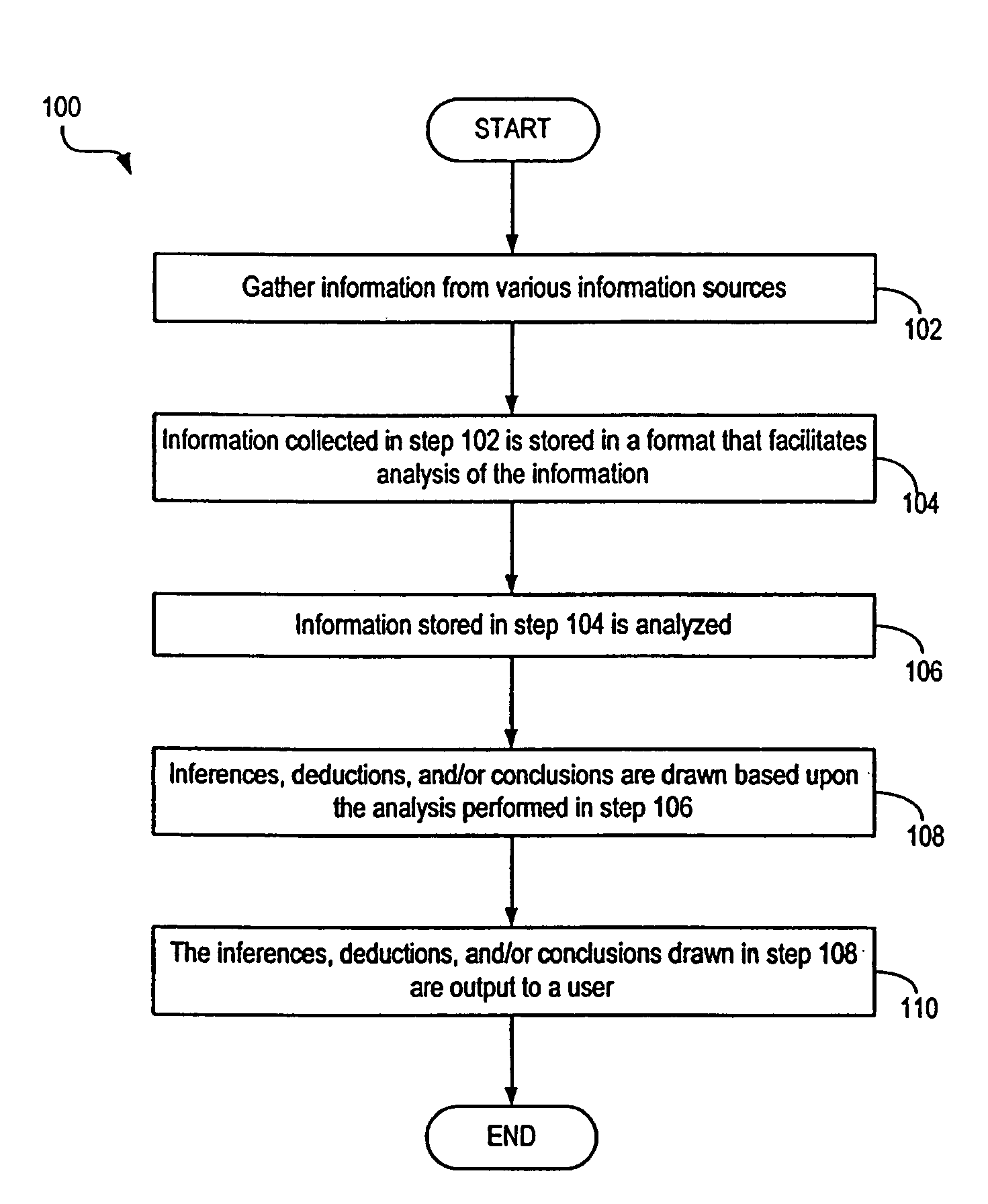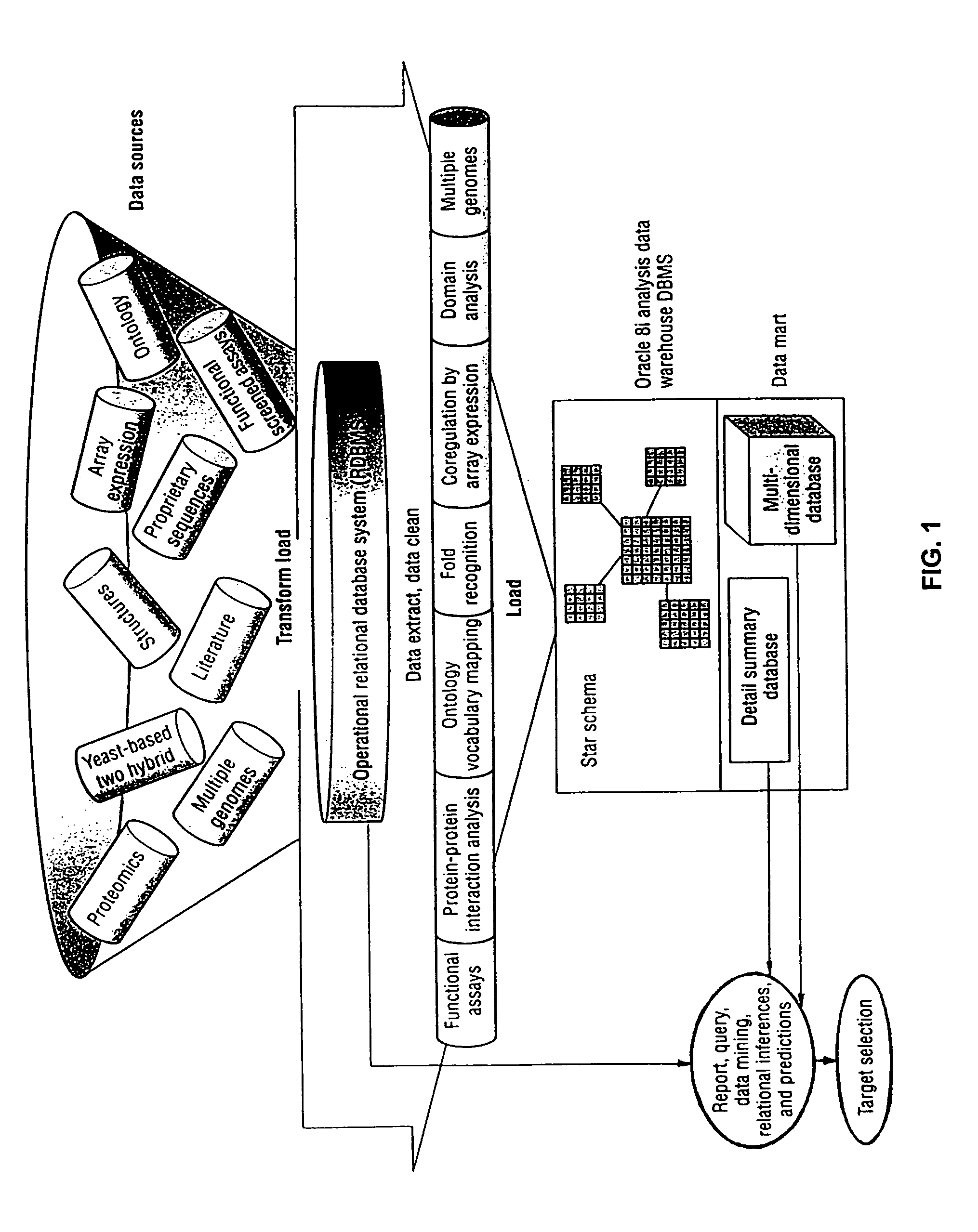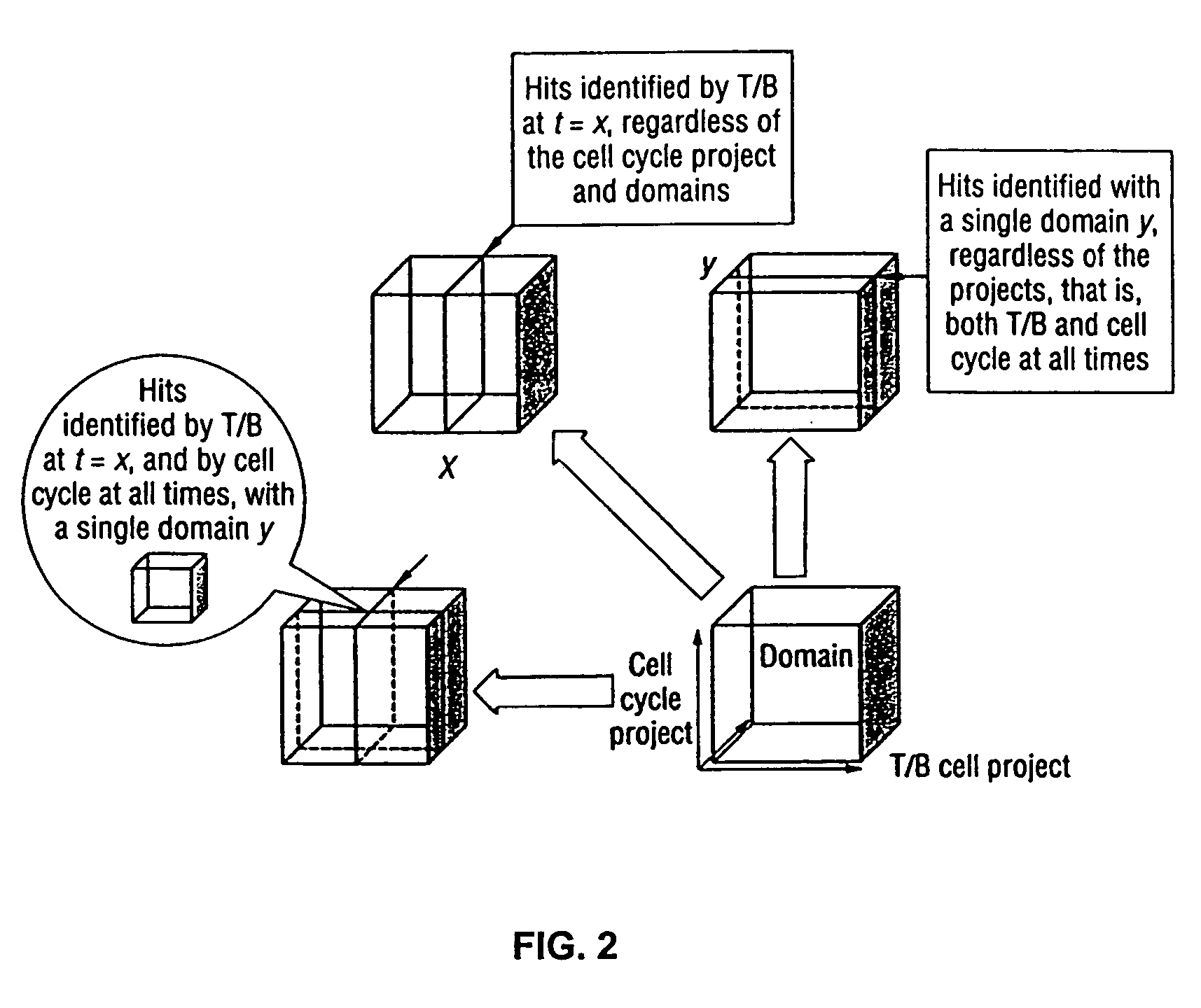Multidimensional biodata integration and relationship inference
a biodata integration and relationship technology, applied in the field of multidimensional biodata integration and relationship inference, can solve problems such as systems that do not integrate collections of data from various sources
- Summary
- Abstract
- Description
- Claims
- Application Information
AI Technical Summary
Problems solved by technology
Method used
Image
Examples
example
[0110]Clustering methods were used to analyze genes from YTH screening. The original data set contained about 300 baits and 2,300 hits. A total of 391 baits and hits with multiple interactions were selected for the analysis shown in FIG. 3. FIG. 4 shows the protein-protein interaction network prior to gene clustering.
[0111]After clustering the first characteristic matrix, proteins that have similar functions or participate in the same pathway were grouped. As shown in FIG. 5, FLAME1-γ (AF009618), Homo sapiens FLAME1 mRNA (Af009616), MRIT-α-1 (U85059), I-FLICE (AF041458), and CLARP (AF005774.1) all encode the same protein, which is commonly referred to as FLIP. FLIP is a death-domain-containing anti-apoptotic molecule that regulates Fas / NFR1-induced apoptosis.
[0112]Another group close to FLIP in the hierarchical tree contains TRAF1 (TNF receptor associated factor 1, NM—005658), TRAF2 (U12597), TANK (TRAF family member associated NFKB activator, XP—002533.1), receptor interacting prot...
PUM
 Login to View More
Login to View More Abstract
Description
Claims
Application Information
 Login to View More
Login to View More - R&D
- Intellectual Property
- Life Sciences
- Materials
- Tech Scout
- Unparalleled Data Quality
- Higher Quality Content
- 60% Fewer Hallucinations
Browse by: Latest US Patents, China's latest patents, Technical Efficacy Thesaurus, Application Domain, Technology Topic, Popular Technical Reports.
© 2025 PatSnap. All rights reserved.Legal|Privacy policy|Modern Slavery Act Transparency Statement|Sitemap|About US| Contact US: help@patsnap.com



